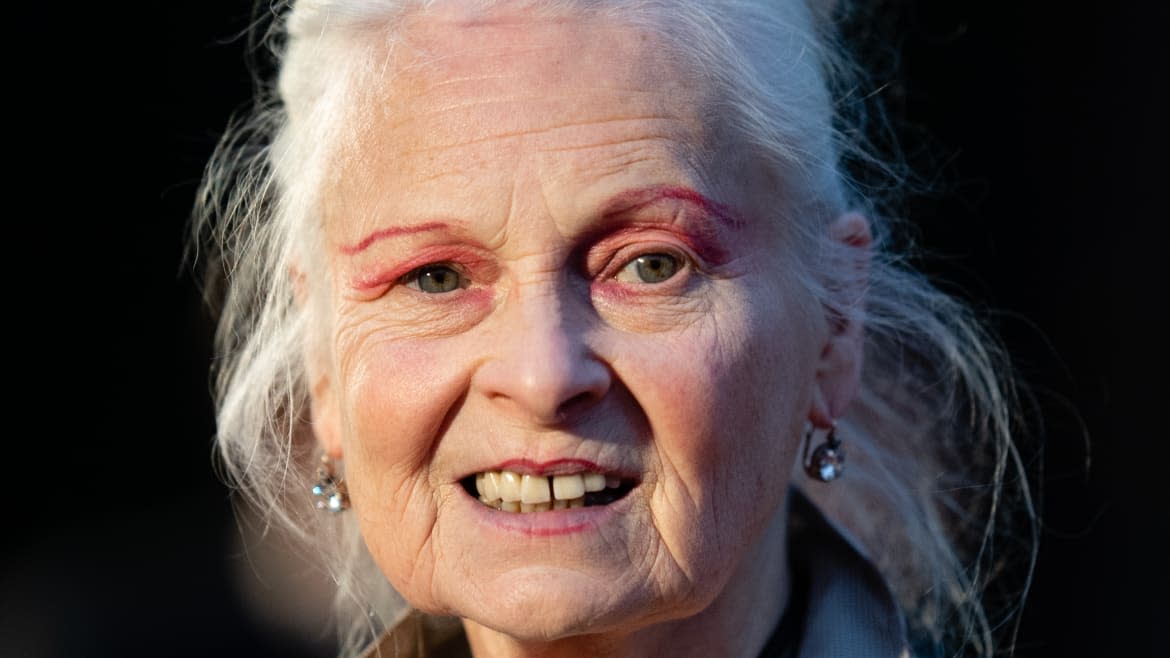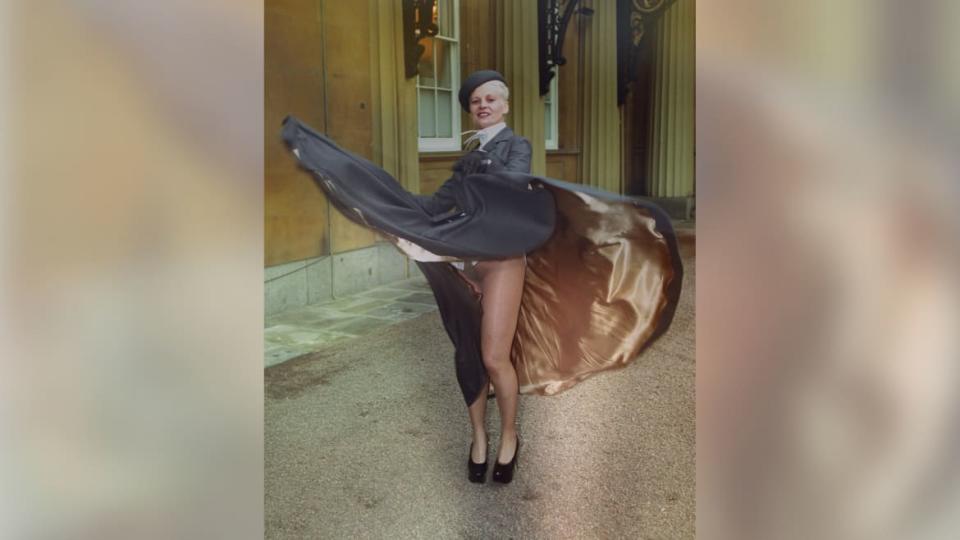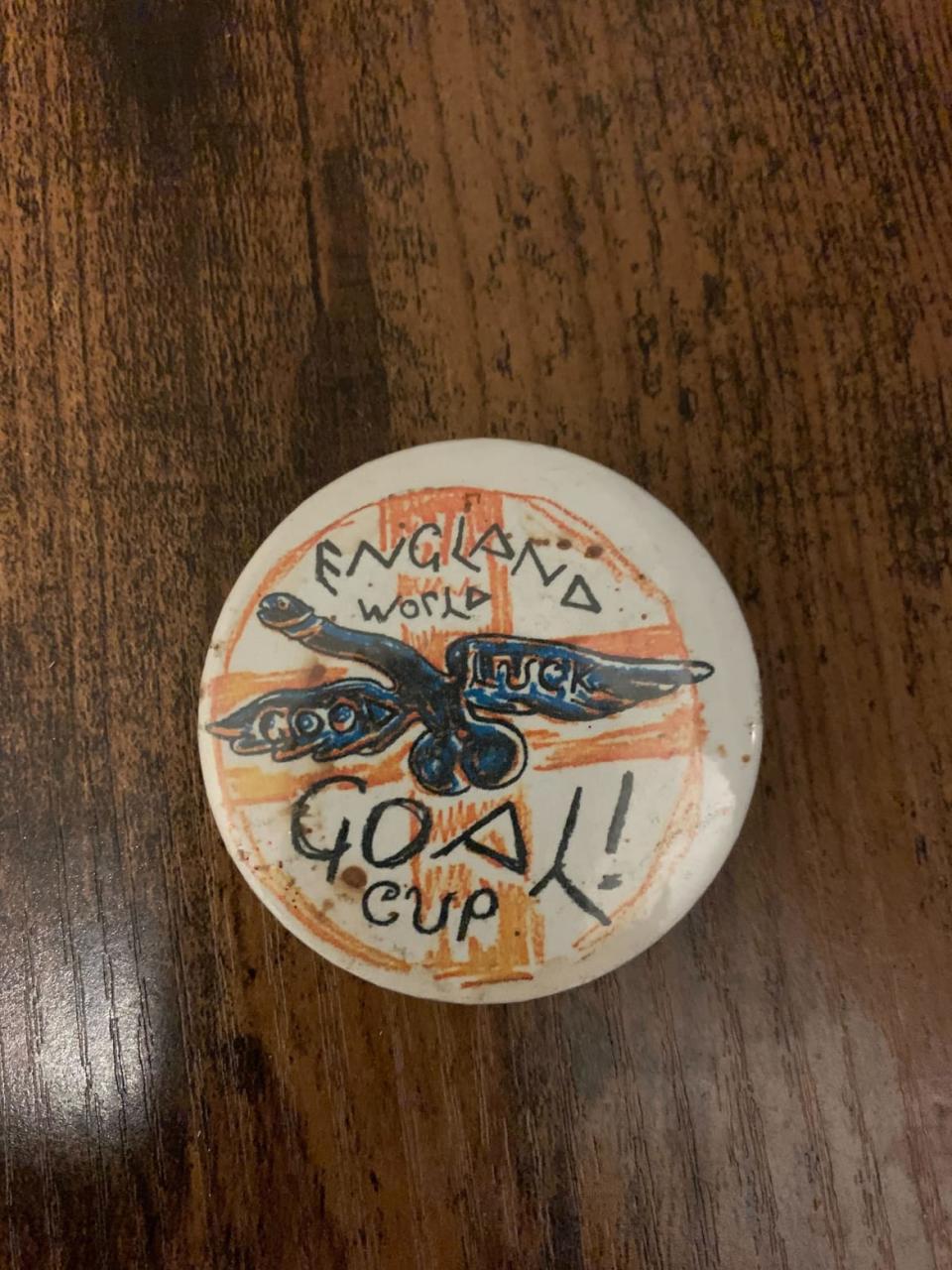Iconic Fashion Designer Vivienne Westwood Dies in London

- Oops!Something went wrong.Please try again later.
Iconic fashion designer Vivienne Westwood, whose clothing defined Britain’s infamous punk era of the 1970s, died Thursday at the age of 81, her eponymous brand confirmed on Instagram.
Westwood died “peacefully and surrounded by her family, in Clapham, South London,” a statement said. A cause of death was not disclosed.
“Vivienne continued to do the things she loved, up until the last moment, designing, working on her art, writing her book, and changing the world for the better,” the brand’s statement said. “She led an amazing life. Her innovation and impact over the last 60 years has been immense and will continue into the future.”
Westwood’s career took off when she started making clothes for SEX, the daring London boutique she owned with future husband Malcolm McLaren that quickly became a cornerstone of the emerging punk music scene. Ripped t-shirts, intentionally ragged sweaters, seams and labels on the outside of clothing, and exaggerated construction became its signature style.
The pair used fashion “to shock, irritate and provoke a reaction but also to inspire change,” punk musician Viv Albertine wrote in her memoir, saying the clothes reflected the kind of music she was trying to make at the time. “It's OK to not be perfect, to show the workings of your life and your mind in your songs and your clothes.”
As Westwood and McClaren’s designs hit the runways in London and Paris, and her clothing dressed the likes of the Sex Pistols, she cemented her reputation as a bonafide rebel, infamously posing as Margaret Thatcher on a cover of Tatler that screamed “This woman was once a punk.”
Vivienne Westwood-- This woman was once a punk" – Westwood as Thatcher for Tatler’s April 1989 cover pic.twitter.com/YD0UY4fHNS
— AnneSophie Bruttmann (@annesobru) April 9, 2015
In 1992, when she collected an OBE award from Queen Elizabeth at Buckingham Palace, she wore nothing by sheer tights under her skirt, resulting in a scandalous—and legendary—photo.

“Dame Vivienne Westwood was an extraordinary talent: an innovative and influential designer, and an iconoclast who pursued every belief and passion with a rare fervor,” Anna Wintour, editor in chief of U.S. Vogue Global Chief Content Officer of Condé Nast, said in a statement sent to The Daily Beast. “One of my very favorite Costume Institute shows, Anglomania, celebrated British fashion, but really it was a celebration of Vivienne. She was at the heart of it all, the designer that every single designer wanted to meet at the Gala. She was a provocateur, and one with a deep understanding of what made her homeland tick: that peculiarly British blend of history, class, sex, Romanticism, and tradition, which she worked up into the most magical and imaginative of clothes.”
Westwood was too good, too inventive for the Britain of the late 1970s and 1980s in which she became famous, or by that era’s measure—notorious. There was one memorable appearance on the BBC chat show Wogan—that edition not hosted by Sir Terry, but by Sue Lawley—in which Westwood exhibited her most recent designs, “Time Machine”: beautifully tailored and wittily subversive designs combining her takes on punk and Britishness.
The audience and Lawley were disparaging, audibly and meanly. It was the easiest, philistine-ish thing to do, and very familiar of the times: to patronize and dismiss Dame Vivienne as a pantomime-ish eccentric, to joke how unwearable the clothes were.
Westwood was treated with derision, not the respect that her designs and visionary genius merited. Quite rightly, and very politely given the atmosphere she was sitting within, she said she would cease the segment if this reaction continued.
Time and her commitment to fashion, design, and her environmental campaigning solidified her reputation—and her status as a leader of not just British fashion design, but design more generally.
In 2006, Daily Beast senior editor and writer Tim Teeman became more personally acquainted with Dame Vivienne. She agreed to design something for The Times of London, where he then worked: a badge in the shape of a bird that readers could cut out and wear to support the England team in the 2006 World Cup. The problem was the bird looked more like a massive flying penis—the then-boss’ words. Could Dame Vivienne make it look less phallus-y? Negotiations, rather hilarious negotiations, began.
Happy to say, the end result still looked, fabulously, like a giant flying penis with pendulous balls—and so it was that Times readers got a very special badge to wear for that year’s World Cup.

Vivienne Westwood's World Cup badge designed for 'The Times of London.'
Dame Vivienne never stopped doing things her way—it was not shock for shock’s sake, it all came completely naturally. She simply expressed herself—the finest example of a restlessly, mischievously creative mind.
Last year, her husband Andreas Kronthaler, 56, said Westwood was still helming the brand, and working everyday, even at the age of 80.
“Vivienne still has the same bite and energy,” he told The Guardian, “although just a little slower. But I still rely on her totally: she’s the only person I trust to say when something is good, the only adviser and guide I can follow.”
Get the Daily Beast's biggest scoops and scandals delivered right to your inbox. Sign up now.
Stay informed and gain unlimited access to the Daily Beast's unmatched reporting. Subscribe now.

